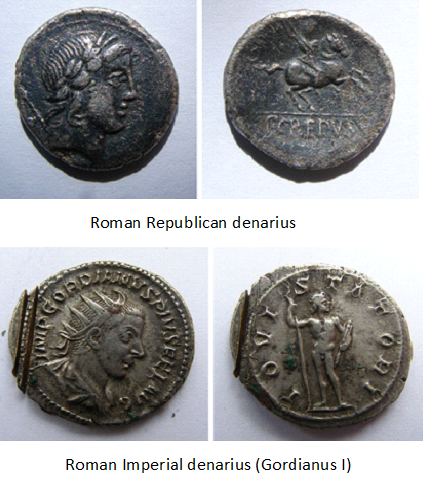User Group Leader: Bogdan Constantinescu
www.nipne.ro/
Venue: MTA Atomki, Debrecen, Hungary
During the experiment, we focused on metallurgical aspects of Dacian and Roman silver items – coins and adornments (Ist Century BC – IIIrd Century AD) and of Histria bronze monetary emissions (VIth Century BC – Ist Century AD) to obtain a general image of metallurgical procedures used by the ancient populations from Romania’s territory. We used a 2.5 MeV proton beam which allowed us a better study on Ag, Sn, Sb – chemical elements with X-rays energy between 20-30 keV, 2.5 MeV protons allowing bigger X-rays production cross-sections. In the case of silver, we studied the so-called “four-metals” items (Silver-Copper-Tin-Lead): Dacian tetradrachms type Radulesti-Hunedoara and a Dacian spiraled bracelet found in North-West of Transylvania. The questions were to understand if silver is alloyed with bronze or separately with copper, tin and lead and, very important, to study elemental segregations of lead, tin, and copper in silver. We also investigated silver Roman denarii – Republican and late Imperial. Five less “artistic” valuable items were cut and their section analyzed by micro-PIXE as elemental maps. The segregation phenomenon is directly connected to the quality of the metallurgy, e.g. the temperature of alloying, and the preliminary hammering, homogeneous materials being obtained at higher temperatures, not always available in those times. Lead and tin segregations in relation to silver were put in evidence – the maps are under processing. The progress of Roman metallurgy is illustrated by the practical absence of segregation for late Imperial denarii as compared with Republican denarii.
The bronze objects were mainly arrow-heads, used as monetary signs by Greeks and local population in Dobroudja (VII-VIth Centuries BC), their main metallurgical problem to be solved by us being the important presence (few percent) of antimony and manganese in their alloys. To explain the presence of antimony as copper minerals component or as intentionally added metal to bronze, three less “good looking” arrow-heads were cut and their section analyzed to obtain elemental maps illustrating an eventual segregation of antimony with respect to copper – which was indeed observed. The explanation of manganese presence in the arrow-heads is more complicated. Up to now, the unanimous opinion was manganese can be only superficially present in ancient bronze. The possibility that manganese (iron also) from the flux used for smelting copper could become a real bronze “bulk” component must be considered. Three arrow-heads where manganese is detected as few percent were also cut, the elemental maps indicating manganese is a bulk constituent of the bronze. All the obtained X-ray spectra and elemental maps will be carefully processed and a scientific paper will be prepared.

